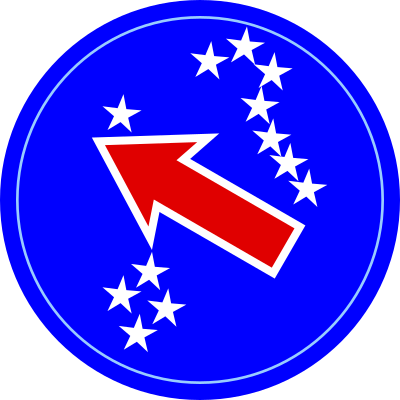
Search
United States Army Pacific

The United States Army Pacific (USARPAC) is an Army Service Component Command which serves as the Army service component for United States Indo-Pacific Command. It may also serve as a Joint Task Force headquarters. The command has forces in Alaska, Hawaii, Japan, and South Korea. It also performs missions in Southeast Asia, in the countries stretching from the Philippines all the way to Bangladesh and India. United States Forces Korea (USFK) has had operational command and control of US Forces in Korea since January 2012, and USARPAC headquarters oversees the manning, training, and equipping of US Army forces assigned to USFK.
However, subordinate units of this command sometimes perform humanitarian missions in places such as Haiti, Cuba, and the Middle East.
History
USARPAC traces its lineage back to 1898 when the United States became a major power in the Pacific. In 1921 Fort Shafter became the headquarters for the Hawaiian Department. When the United States entered World War II, the Hawaiian Department became subordinate to the Commander-in-Chief, Pacific Ocean Areas.
History of designations
Throughout its history the command was designated:
- US Army Forces, Central Pacific Area (1943–44)
- US Army Forces, Pacific Ocean Areas (1944–69)
- US Army Forces, Middle Pacific (1945–47)
- US Army, Pacific (1947–1974)
- US Army Western Command (1979–1990)
- United States Army Pacific (1990–present)
Historical summary
During the Korean War, USARPAC provided combat forces, training, and logistics.
During the Vietnam War, the command provided the same support to United States Army Vietnam. After the war the Army cut its presence in the region as there was no longer a need for such a large number of combat forces in the Pacific. Subsequently, USARPAC was eliminated as a component command and Army forces in Korea and Japan became separate major commands. In Hawaii, USARPAC headquarters was superseded by US Army Support Command Hawaii (USASCH) and a Department of the Army field operating agency, US Army CINCPAC Support Group.
In 1979 the Army established US Army Western Command (WESTCOM) as a major command and the Army component of US Pacific Command. WESTCOM took command of Army forces in Hawaii. In 1989 it added United States Army Alaska and in 1990 United States Army, Japan. In 1990 WESTCOM was renamed USARPAC. USARPAC has sent forces on multiple humanitarian missions, disaster relief, and defense support of civil authorities.
In October 2000 the headquarters reorganized as a multi-component Army service component command.
Since 9/11, the command plays a major role in the homeland defense of the United States. The command has also sent soldiers in support of the Global War on Terrorism to fill operational gaps.
The command insignia was designed in 1944. It depicts the axis of advance of U.S. forces across the pacific.
Commander's responsibilities
- Responsible to SECARMY for execution of 10 USC § 3013(b) responsibilities
- Admins and supports army units assigned or attached to United States Indo-Pacific Command
- Reports to the Commander, United States Indo-Pacific Command
Current structure
- Army Pacific, Fort Shafter (HI)
- Eighth Army, Yongsan Garrison (South Korea)
- 2nd Infantry Division, Camp Humphreys (South Korea)
- 19th Expeditionary Sustainment Command, Daegu (South Korea)
- I Corps, Joint Base Lewis–McChord (WA)
- 7th Infantry Division, Joint Base Lewis–McChord (WA)
- 25th Infantry Division, Schofield Barracks (HI)
- 11th Airborne Division, Fort Richardson (AK)
- United States Army Japan, Camp Zama (Japan)
- 593rd Expeditionary Sustainment Command, Joint Base Lewis–McChord (WA)
- 94th Army Air and Missile Defense Command, Fort Shafter
- 8th Theater Sustainment Command, Schofield Barracks
- 8th Military Police Brigade, Schofield Barracks
- 130th Engineer Brigade, Schofield Barracks
- 311th Signal Command (Theater) (Pacific)
- 1st Signal Brigade, Seoul, South Korea
- 516th Signal Brigade, Fort Shafter
- 18th Medical Command, Fort Shafter
- 9th Mission Support Command, Fort Shafter, part of US Army Reserve
- 196th Infantry Brigade, Fort Shafter, part of US Army Reserve
- 500th Military Intelligence Brigade, Schofield Barracks, part of Army Intelligence and Security Command
- 5th Battlefield Coordination Detachment, Joint Base Pearl Harbor–Hickam
- Eighth Army, Yongsan Garrison (South Korea)
Former units include the U.S. Army Chemical Activity, Pacific, at Johnston Atoll, which traced some of its history to the 267th Chemical Company and the Project 112 biological warfare defense experiments. This became the Johnston Atoll Chemical Agent Disposal System, which was finally deactivated in 2001.
Commanders
Command Group 2022
Source:
- Commanding General: General Charles A. Flynn
- Deputy Commanding General: Lieutenant General James B. Jarrard
- Deputy Commanding General – North: Major General Chris Smith
- Deputy Commanding General, Army National Guard: Major General Reginald G. Neal
- Deputy Commanding General, Army Reserve: Brigadier General Timothy D. Connelly
- Chief of Staff: Major General Peter N. Benchoff
- Command Sergeant Major: Command Sergeant Major Scott A. Brzak
References
External links
- Government
- Official website
- Lineage and Honors Information at the U.S. Army Center of Military History
- General information
- Works by or about United States Army Pacific at Internet Archive
Text submitted to CC-BY-SA license. Source: United States Army Pacific by Wikipedia (Historical)
Articles connexes
- United States Army
- Eighth Army (United States)
- United States Army, Japan
- Commanding General, United States Army Pacific
- United States Department of the Army
- United States Indo-Pacific Command
- Structure of the United States Army
- I Corps (United States)
- West Coast of the United States
- United States Army Intelligence and Security Command
- Tenth United States Army
- Ninth Army (United States)
- Sixth Army (United States)
- Pacific Air Forces
- 1989 United States Army Pacific order of battle
- General of the Army (United States)
- List of United States Army Military Police Corps units
- Army of the United States
- Order of battle of the Attack on Pearl Harbor
- 94th Army Air and Missile Defense Command
Owlapps.net - since 2012 - Les chouettes applications du hibou




